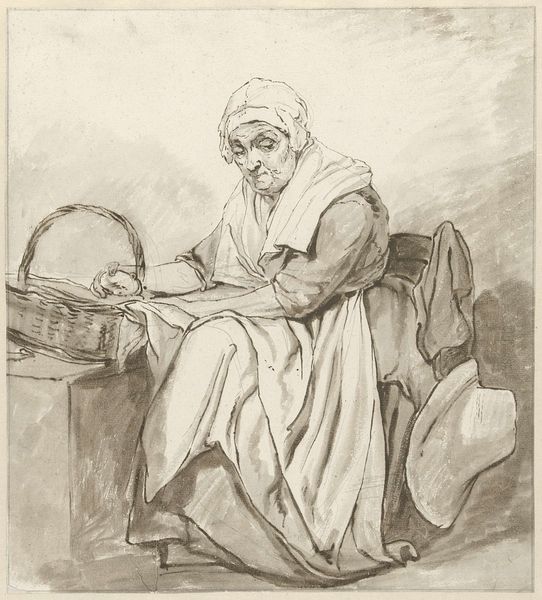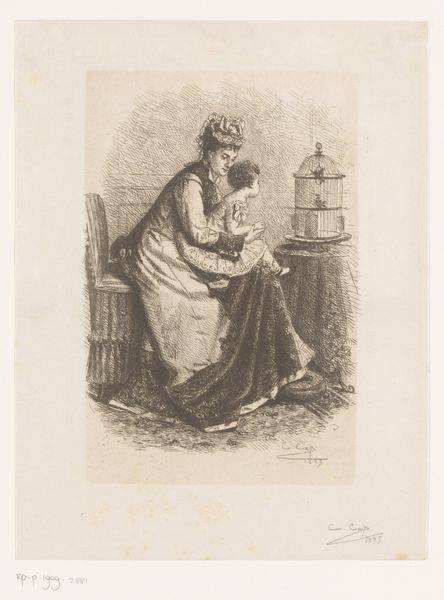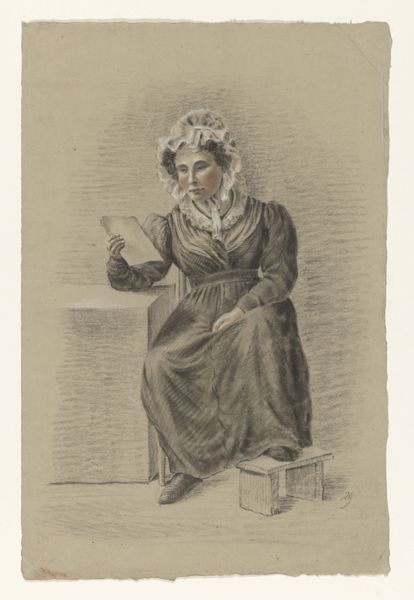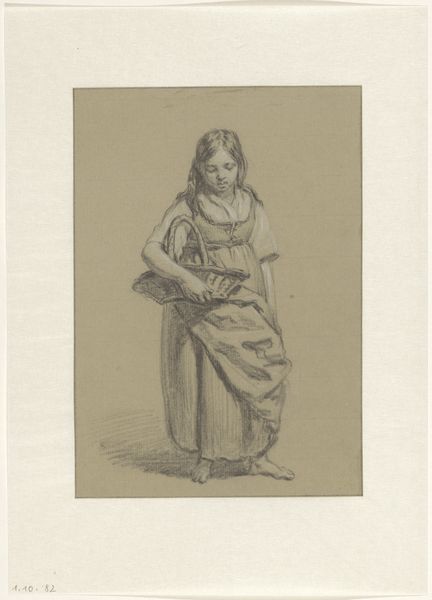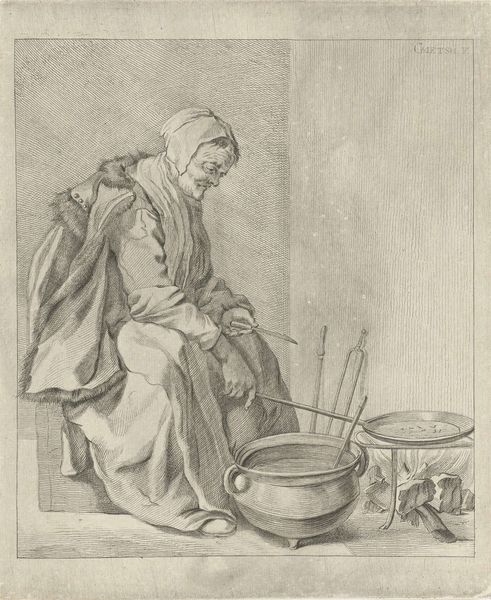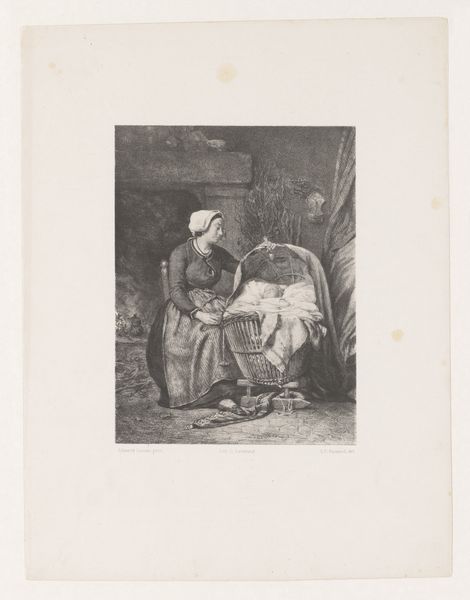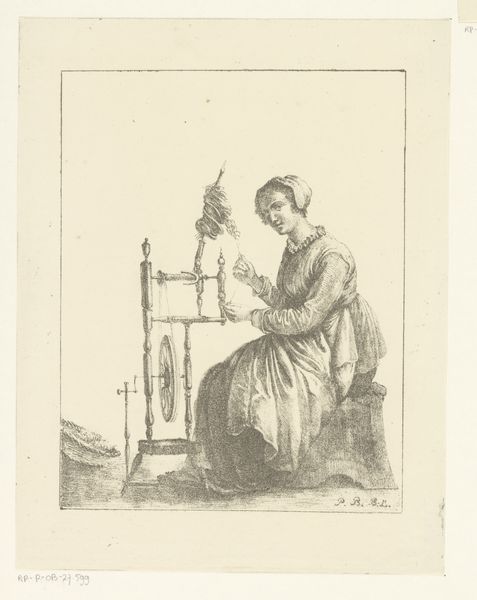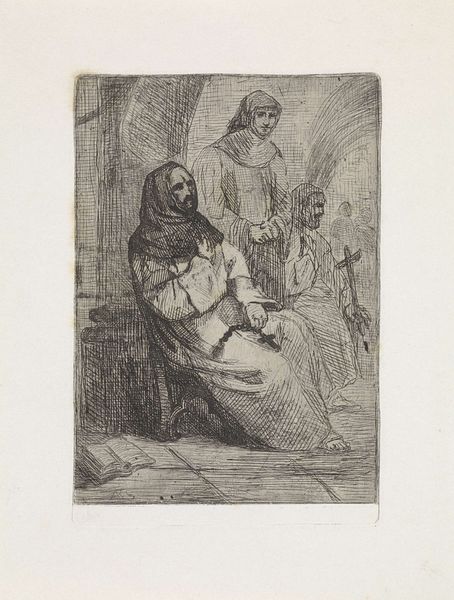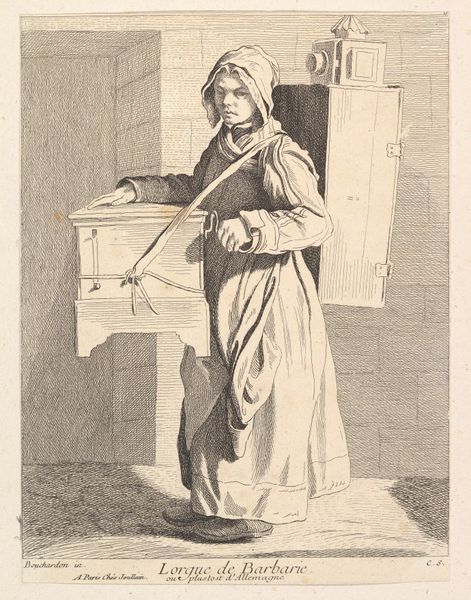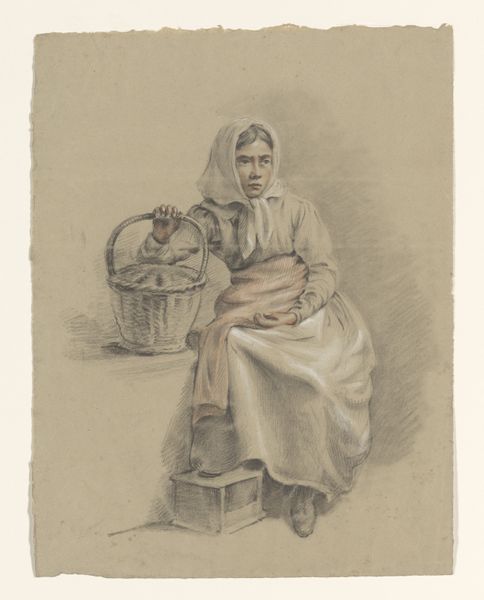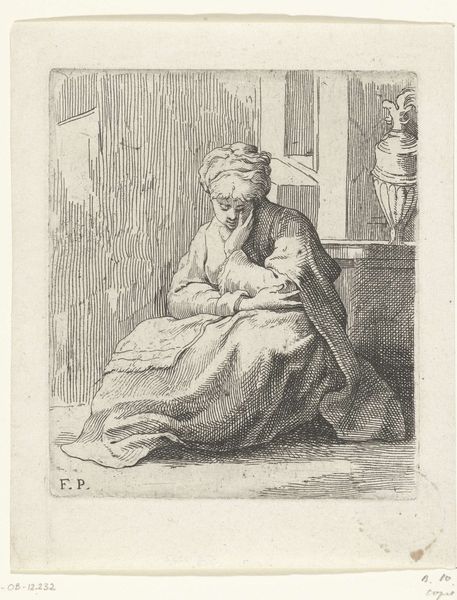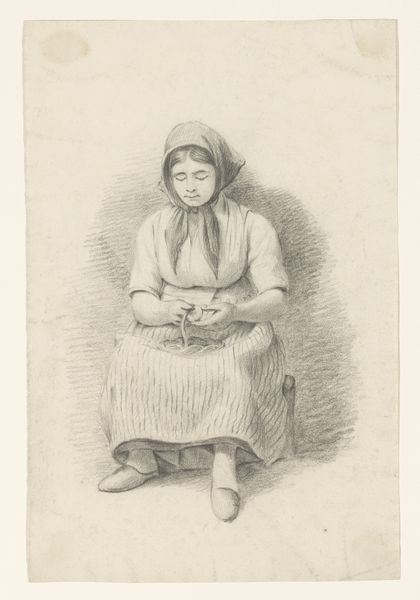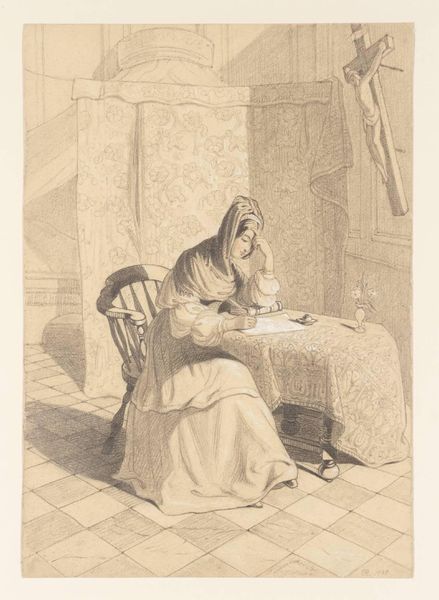
drawing, pencil
#
portrait
#
drawing
#
pencil drawing
#
pencil
#
portrait drawing
#
genre-painting
#
realism
Dimensions: height 317 mm, width 225 mm
Copyright: Rijks Museum: Open Domain
Editor: This is "Kneeling Girl, Facing Left," a pencil drawing made sometime between 1809 and 1869 by Alexander Cranendoncq. It's so delicate, almost like a fleeting memory. What can you tell me about it? Curator: The beauty here lies in revealing the material conditions of labor and its representation. The pencil, a readily available and relatively inexpensive material, democratizes artmaking, doesn’t it? Consider the social context. The Realist style gains traction, challenging academic art by focusing on the everyday. How does the choice of pencil and the depiction of this kneeling girl challenge notions of 'high art'? Editor: I hadn't really thought about it that way, about the choice of materials as a conscious decision related to artistic values. I just saw it as a simple drawing of a girl! Curator: Exactly! It’s in this “simplicity” that we can find social commentary. The pencil allowed for wider accessibility to art production. And, thinking about the labor that goes into creating art: pencil drawings were often studies for larger paintings. The drawing here may not be the end product but could be understood as an important, valued form of artistic labor and production. Editor: So, even a sketch holds significance beyond just being a preliminary study. Curator: Precisely! It represents the artist's labor, the accessibility of materials, and a potential challenge to the traditional art hierarchy. What does her clothing or the tools she holds suggest to you? Think about their material properties and the work they imply. Editor: I see the simple wooden clogs now and realize it says something about the girl's background. Curator: And what about the 'genre painting' aspect? Does that make you think differently about who can be seen as worthy of artistic representation? Editor: Yes! Looking at it this way, I appreciate the drawing even more. Thank you! Curator: It's been my pleasure. Thinking through the materials and context opens a whole new way of interpreting art, doesn't it?
Comments
No comments
Be the first to comment and join the conversation on the ultimate creative platform.
